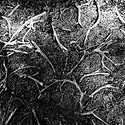Ektagraphic
Member
Hello-
I am sure this has been asked millions of times, so please excuse me. I am newbie with long exposure and I am wondering how to go about them. I would like to take some long 30 second shots with a roll of TRI-X 400, but I don't know what to aperature to use. I am guessing a slower film would be better? I have a cable release and a tripod. I really don't know how to go about asking this question. Is there any good resource online that I could look at. I am planning to go off to shoot today and it is a somwhat rainy new england afternoon....Thanks for any advice you can give me.
I am sure this has been asked millions of times, so please excuse me. I am newbie with long exposure and I am wondering how to go about them. I would like to take some long 30 second shots with a roll of TRI-X 400, but I don't know what to aperature to use. I am guessing a slower film would be better? I have a cable release and a tripod. I really don't know how to go about asking this question. Is there any good resource online that I could look at. I am planning to go off to shoot today and it is a somwhat rainy new england afternoon....Thanks for any advice you can give me.
Last edited by a moderator:





